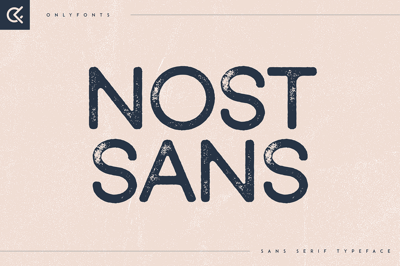Font Licensing 101: What Every Designer Needs to Know
Font Licensing 101: What Every Designer Needs to Know
Font licensing represents one of the most confusing yet crucial aspects of professional design work. Many designers unknowingly violate licensing agreements, exposing themselves and their clients to legal risks while limiting their creative possibilities. Understanding font licensing protects your business, ensures legal compliance, and helps you make informed decisions about typography investments. This comprehensive guide demystifies font licensing complexities and provides practical strategies for navigating the legal landscape of typography usage.
Understanding the Basics: What is Font Licensing?
Font licensing determines how you can legally use typefaces in your design work. Unlike purchasing physical products that provide ownership, font licensing grants specific usage rights while the foundry or designer retains intellectual property ownership. These rights vary dramatically between different license types and sources.
Why Font Licensing Matters: Fonts are protected intellectual property, similar to music, photography, or written content. Using fonts without proper licensing constitutes copyright infringement that can result in substantial financial penalties, legal action, and professional reputation damage.
Professional designers must understand licensing requirements to protect their businesses and clients from legal complications. Ignorance of licensing terms doesn't provide legal protection, making education essential for career sustainability.
The Economics of Font Protection: Type designers invest months or years developing single typefaces, making licensing revenue essential for continued innovation. Respecting licensing agreements supports the typography industry while ensuring continued development of high-quality fonts for design professionals.
Understanding licensing also helps designers make cost-effective font choices that provide maximum legal flexibility within budget constraints.
Types of Font Licenses: Understanding Your Options
Different license types provide varying usage rights and restrictions that significantly impact how you can use fonts in professional projects. Understanding these distinctions helps you choose appropriate licensing for specific applications and client requirements.
Desktop Licenses: Traditional Design Work Desktop licenses permit font installation on specified numbers of computers for design work, including print materials, logos, and static graphics. These licenses typically don't include web usage rights or embedding permissions for digital applications.
Most desktop licenses specify maximum installation numbers (usually 1-5 computers) and may restrict commercial usage depending on license terms. Understanding these limitations prevents inadvertent violations during team collaboration or office expansion.
Web Font Licenses: Digital Applications Web font licenses allow embedding fonts in websites, with usage typically measured by monthly page views or unique visitors. These licenses often cost more than desktop alternatives but provide essential rights for digital branding and online presence.
Web licenses frequently include technical specifications about embedding methods and may restrict certain usage types like app development or digital advertising. Always verify specific web usage rights before implementing fonts in digital projects.
App and Software Licenses Mobile apps and software applications require special licensing that covers font embedding within applications distributed to end users. These licenses are typically more expensive due to broader distribution scope and potential commercial impact.
App licensing often includes user number restrictions and may differentiate between free and paid applications. Understanding these distinctions helps prevent costly compliance violations in software development projects.
Enterprise and Unlimited Licenses Large organizations often purchase enterprise licenses that provide company-wide usage rights across all applications and media. While expensive, these licenses offer comprehensive coverage and simplified compliance management for complex organizations.
Enterprise licenses typically include provisions for contractors, subsidiaries, and partner organizations, making them valuable for agencies and large corporations with diverse typography needs.
Free Font Licensing: Navigating Open Source Typography
Free font resources provide powerful alternatives to premium licensing, but understanding their specific licensing terms remains crucial for legal compliance and professional usage. Not all free font options offer identical rights and freedoms.
Open Source Font License (SIL OFL) The SIL Open Font License represents the gold standard for free font licensing, providing extensive usage rights including commercial applications, modification, and redistribution. Fonts under SIL OFL can be used freely in any project without attribution requirements or usage restrictions.
SIL OFL specifically allows embedding in documents, websites, and applications while preventing standalone font sales. This license provides maximum creative freedom while protecting font developers' commercial interests.
Creative Commons Licensing Some free font options use Creative Commons licenses with varying restrictions and requirements. CC-BY requires attribution but allows commercial usage, while CC-BY-SA includes share-alike provisions that may affect derivative works.
Understanding specific Creative Commons terms prevents inadvertent license violations while maximizing legal usage opportunities. Always verify CC license versions and requirements before implementing fonts in client projects.
Custom Free Licenses Individual designers may create custom licenses for their free font releases, requiring careful review to understand permitted uses and restrictions. These licenses vary significantly in scope and requirements, making individual assessment necessary.
Some custom licenses restrict commercial usage, require attribution, or limit modification rights. Reading full license terms prevents assumptions that could lead to legal complications.
Public Domain Fonts Truly public domain fonts offer unrestricted usage rights without licensing concerns, but verifying public domain status requires careful research. Many allegedly public domain fonts actually carry licensing restrictions or questionable legal status.
Stick to verified public domain sources and well-documented free font collections to ensure legitimate public domain status and avoid legal uncertainties.
Commercial Font Licensing: Premium Options and Restrictions
Premium font licensing provides access to exclusive typefaces and comprehensive usage rights, but understanding specific terms and restrictions remains essential for proper compliance and value maximization.
Single-User vs. Multi-User Licensing Most commercial licenses specify maximum user numbers, with violations occurring when fonts are installed on more computers than permitted. Multi-user licenses cost more but provide essential rights for team collaboration and office environments.
Usage Scope Restrictions Premium licenses may restrict specific usage types such as merchandise, packaging, or digital advertising. Understanding these limitations prevents costly compliance violations and ensures appropriate licensing for intended applications.
Geographic and Time Limitations Some licenses include geographic restrictions or time limitations that affect long-term usage rights. International projects may require additional licensing, while time-limited licenses need renewal for continued legal usage.
Modification and Customization Rights Premium licenses vary in modification permissions, with some allowing character adjustments while others prohibit any alterations. Understanding customization rights helps determine whether fonts meet specific project requirements.
Legal Risks and Consequences of License Violations
Font license violations carry serious legal and financial risks that can devastate design businesses and professional reputations. Understanding these consequences motivates proper licensing compliance and risk management strategies.
Financial Penalties and Damages License violations can result in substantial financial penalties, including statutory damages, legal fees, and lost profits claims. These costs often exceed original licensing fees by significant margins, making compliance a smart financial decision.
Cease and Desist Actions Font foundries actively monitor unauthorized usage and frequently issue cease-and-desist notices requiring immediate font removal and potential compensation. These actions can disrupt client projects and damage professional relationships.
Professional Reputation Damage License violations become public through legal actions and industry communications, potentially damaging professional reputation and client trust. Design professionals build careers on credibility that license violations can quickly destroy.
Client Liability Issues Designers using unlicensed fonts may expose clients to secondary liability for copyright infringement, creating professional liability and relationship problems that extend beyond immediate legal consequences.
Licensing for Different Design Applications
Various design applications carry distinct licensing requirements that affect font choice and budget considerations. Understanding application-specific needs helps ensure appropriate licensing while controlling costs.
Print Design Licensing Traditional print materials typically require only desktop licenses, making them the most cost-effective application for premium fonts. However, high-circulation publications may need extended licensing depending on foundry terms.
Digital and Web Design Websites and digital applications require web font licenses that cover online embedding and display. E-commerce sites and high-traffic applications often need premium web licensing with unlimited page view allowances.
Branding and Logo Design Logo applications may require special licensing that covers trademark usage and extended commercial applications. Some foundries offer logo-specific licenses while others include logo rights in standard commercial licenses.
Packaging and Merchandise Product packaging and merchandise applications often require extended commercial licenses that cover physical product sales and distribution. Understanding these requirements prevents compliance issues in retail applications.
Building a Legally Compliant Font Library
Creating a comprehensive font library requires strategic licensing decisions that balance creative needs with legal requirements and budget constraints. Smart licensing strategies provide maximum flexibility while ensuring full compliance.
Audit Your Current Collection Review existing font collections to identify licensing status and ensure compliance with current usage. Remove or properly license any fonts with unclear or violated licensing terms to eliminate legal risks.
Prioritize Versatile Licensing Choose fonts with comprehensive licensing that covers multiple applications and usage types. While initially more expensive, versatile licensing provides better long-term value and reduced complexity.
Strategic Free Font Integration Integrate high-quality free font options that provide professional results without licensing restrictions. Many free font collections now offer quality that rivals premium alternatives while eliminating ongoing licensing concerns.
Documentation and Record Keeping Maintain detailed records of font licenses, purchase dates, and usage rights for all fonts in your library. Proper documentation provides legal protection and helps prevent inadvertent compliance violations.
Licensing for Agencies and Team Environments
Design agencies and collaborative environments face additional licensing complexities that require systematic approaches to ensure team-wide compliance and cost control.
Multi-User License Planning Calculate actual user requirements across all team members who might access fonts during projects. Multi-user licenses often provide better value than multiple single-user purchases while ensuring proper coverage.
Contractor and Freelancer Considerations Determine whether your licenses cover contractors and freelancers working on agency projects. Some licenses include contractor provisions while others require separate licensing for all contributors.
Client Font Provision Establish policies for providing fonts to clients for ongoing brand maintenance and marketing materials. Understanding license transfer rights prevents violations while supporting client relationships.
Standardization and Control Implement font management systems that ensure team members access only properly licensed fonts while preventing unauthorized installations or usage that could create compliance problems.
Future-Proofing Your Licensing Strategy
Typography technology and licensing models continue evolving, making forward-thinking licensing strategies important for long-term professional success and legal protection.
Subscription vs. Purchase Models Font subscription services provide access to extensive libraries for predictable monthly costs, often including licensing for multiple applications and users. Compare subscription costs with individual purchases to determine optimal value.
Variable Font Licensing Variable font technology may affect licensing terms as single files provide multiple font variations. Understanding how variable fonts impact licensing costs and restrictions helps inform future font choices.
Cloud-Based Font Management Cloud font services handle licensing compliance automatically while providing team access and management features. These services often include legal protection and technical support that simplify font management.
International Licensing Considerations
Global design work introduces additional licensing complexities related to international copyright law, local regulations, and cross-border usage rights.
Multi-Territory Licensing Some font licenses restrict usage to specific geographic regions, requiring additional licensing for international applications. Global brands need licensing that covers all operational territories.
Local Copyright Variations Copyright laws vary between countries, affecting font protection and usage rights. Understanding local regulations helps ensure compliance in all operational jurisdictions.
Currency and Payment Considerations International font licensing may involve currency fluctuations and payment method restrictions that affect total costs and procurement processes.
Conclusion: Mastering Font Licensing for Professional Success
Font licensing mastery protects your business while enabling creative freedom through proper understanding and compliance with typography usage rights. The complexity of licensing requirements makes education essential for professional sustainability and growth.
Remember that licensing compliance is an investment in professional credibility and business protection rather than an unnecessary expense. Proper licensing enables confident font usage while supporting the typography industry that provides essential creative tools.
Start by auditing your current font usage and ensuring compliance with existing licensing terms. Gradually build a properly licensed library that supports your professional needs while eliminating legal risks and uncertainties.
Whether using free font options with open-source licensing or investing in premium alternatives, understanding your rights and restrictions empowers better design decisions and professional growth.
The complexity of font licensing shouldn't intimidate or limit your creative work. Instead, proper understanding provides the foundation for confident typography choices that enhance your design effectiveness while protecting your professional interests.
Stay informed about licensing developments and maintain detailed records of your font acquisitions and usage rights. Professional font licensing management will serve your career throughout its development while ensuring legal protection and creative freedom.



